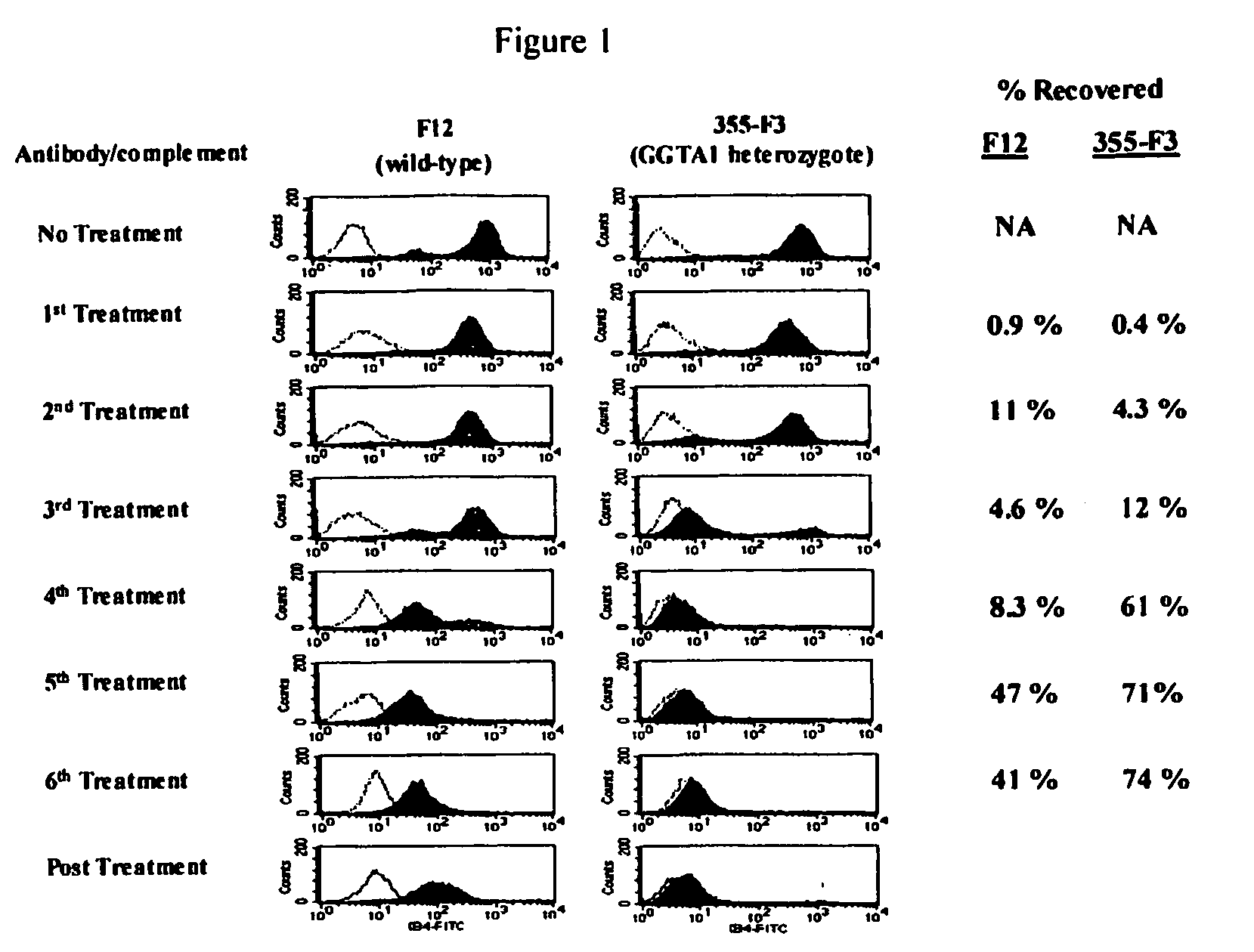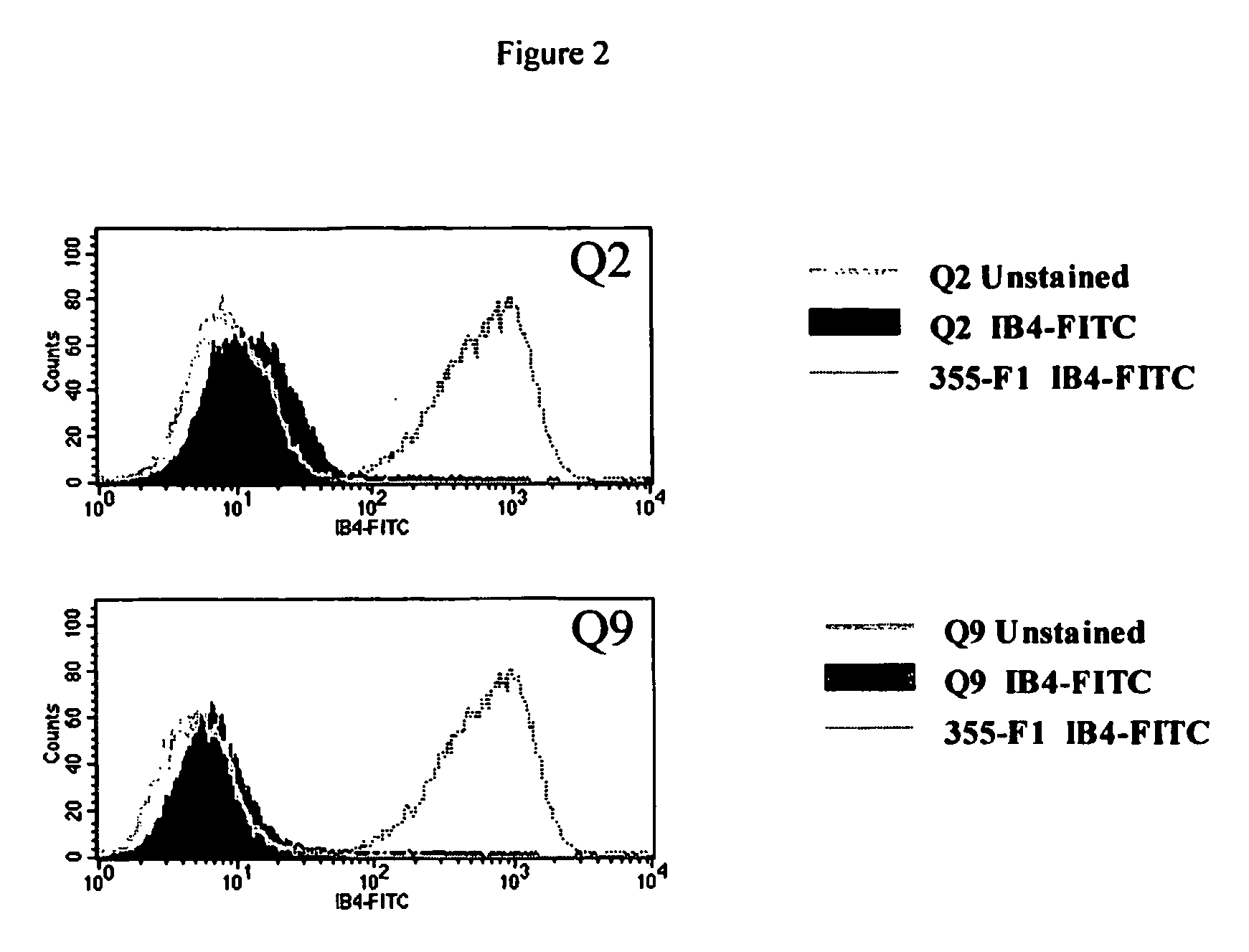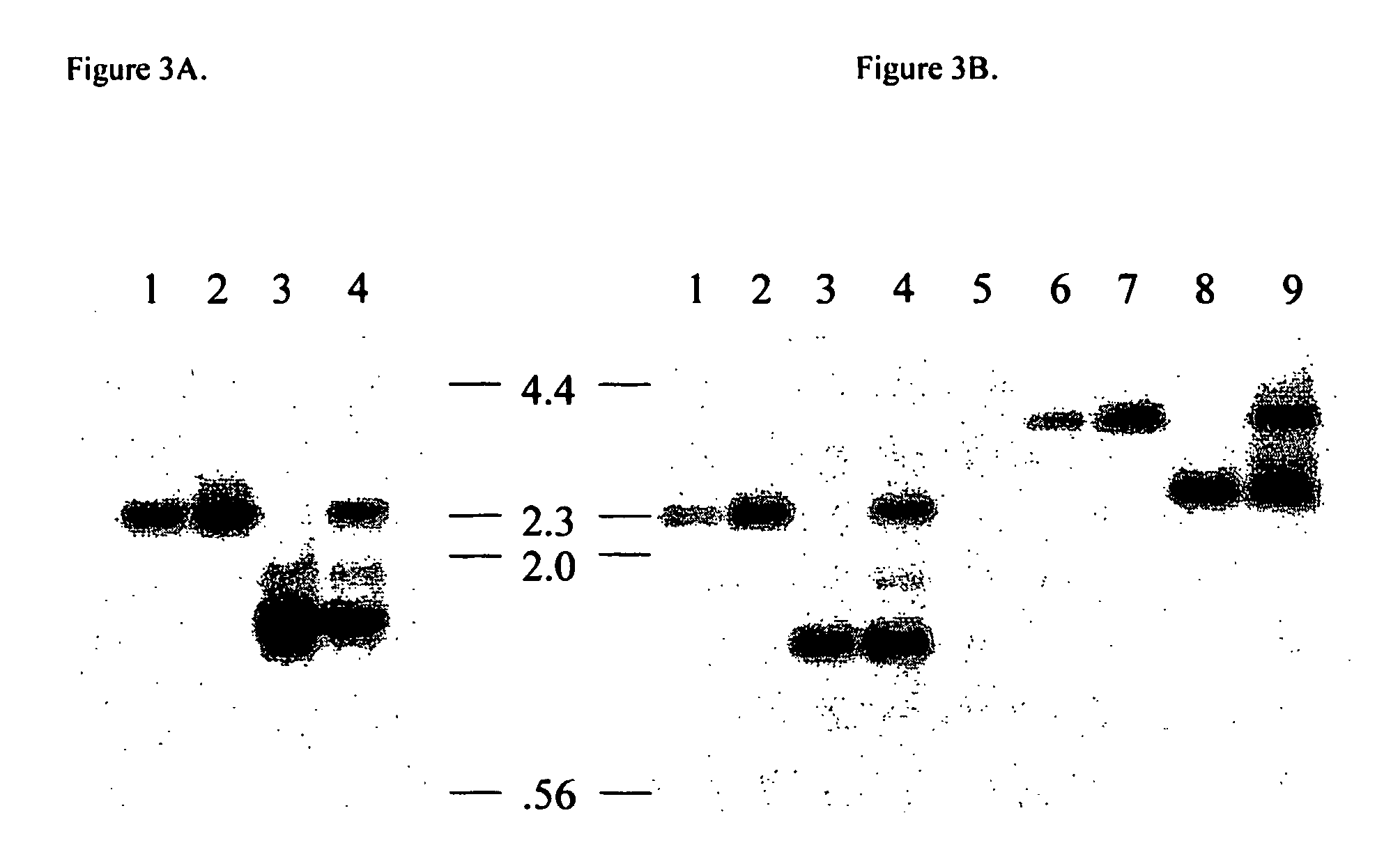Alpha(1,3)-galactosyltransferase null cells, methods of selecting and alpha(1,3)-galactosyl transferase null swine produced therefrom
a technology of alpha (1,3)-galactosyltransferase and null swine, which is applied in the field of gene manipulation of nonhuman animals, can solve the problems of limiting the ability to provide organs to patients in need of transplantation, partial reduction of gal epitope numbers, and failure to significantly extend the survival of grafts in primate recipients
- Summary
- Abstract
- Description
- Claims
- Application Information
AI Technical Summary
Benefits of technology
Problems solved by technology
Method used
Image
Examples
example 1
Selection and Analysis of Cell Populations Lacking α-1,3-gal Epitope Expression
[0072] The ability to select populations of cells lacking α-1,3-gal epitope expression was tested by multiple selection of GGTA1 heterozygous 355-F3 cells with anti-α-1,3-gal antibody and complement. GGTA1 heterozygous cells were isolated from a nuclear transfer fetus (355-F3) at day 32 of gestation and cultured as described (Lai et al., Science 295:1089). The donor cells for reconstruction of nuclear transfer embryos leading to the fetuses were explanted and cultured from ear sections of pig O212-2, a GGTA1 heterozygote in which one allele has been inactivated by homologous recombination with vector pGalGTΔS-Neo (Lai et al., Science 295:1089, 2002). 355-F3 cells were cultured in F10 medium containing 20% FBS and 20 ug / ml gentamycin (media) on collagen I coated dishes at 5% CO2, 3% O2, and 37° C. Antibodies against α-1,3-gal epitope were purified from naïve baboon plasma and was adsorbed on αGal sugar us...
example 2
Selection and Analysis of Cell Clones Lacking Wild-type GGTA1 Expression
[0074] GGTA1 heterozygous 355-F1 cells were isolated from a nuclear transfer fetus (355-F1) at day 32 of gestation and cultured as described (Lai et al., Science 295:1089. The donor cells for reconstruction of nuclear transfer embryos leading to the fetuses were explanted and cultured from ear sections of pig O212-2, a GGTA1 heterozygote in which one allele has been inactivated by homologous recombination with vector pGalGTΔS-Neo (Lai et al., Science 295:1089, 2002). Cells were cultured in F10 medium containing 20% FBS and 20 μg / ml gentamycin (media) on collagen I coated dishes at 5% CO2, 3% O2, and 37° C. The cells were then treated with antibody and complement twice in suspension as above prior to plating at low density for isolation of clones lacking α(1,3)-gal epitope expression. After the second treatment, cells were plated at 5 and 10 cells / well in collagen I coated 96 well plates. In situ treatments with...
example 3
Production of Piglets Using Cell Clones Lacking Wild-type GGTA1 Expression
[0075] Nuclear transfer was performed using clonal cell lines Q2 and Q9 (described above) and lines Q32 and Q37, produced at the same time using the same methodology. FIG. 4 shows a genomic southern blot of DNA from the four clones hybridized to a probe from the GGTA1 gene, confirming the absence of a wild-type GGTA1 allele in all of the cloned cell lines. Embryos reconstructed by nuclear transfer using the Q32 cell line were transferred to 6 surrogate gilts, 3 of which established pregnancies as determined by ultrasound examination. One of these pregnancies continued to term and delivered two piglets following caesarian section (piglets O177-1 and O177-2).
[0076] Genomic southern blot analysis of DNA prepared from ear fibroblasts confirmed the absence of a wild-type GGTA1 allele in both piglets (FIG. 5). Expression of α-1,3-gal epitopes in ear fibroblasts of piglet O177-1 was examined by flow cytometric anal...
PUM
 Login to View More
Login to View More Abstract
Description
Claims
Application Information
 Login to View More
Login to View More - R&D
- Intellectual Property
- Life Sciences
- Materials
- Tech Scout
- Unparalleled Data Quality
- Higher Quality Content
- 60% Fewer Hallucinations
Browse by: Latest US Patents, China's latest patents, Technical Efficacy Thesaurus, Application Domain, Technology Topic, Popular Technical Reports.
© 2025 PatSnap. All rights reserved.Legal|Privacy policy|Modern Slavery Act Transparency Statement|Sitemap|About US| Contact US: help@patsnap.com



